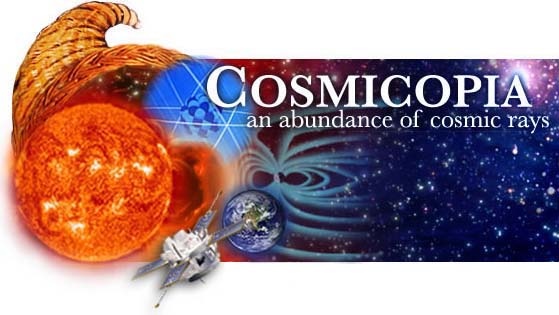
Supernova 1006
Click on image for high-resolution version
After almost a century of study, the puzzle of what cosmic rays are and where they come from may have
been at least partially solved by X-ray images and spectra from the ASCA
satellite observatory. Pieced together to show the region around a star
observed to go supernova in 1006 AD,
the overlapping X-ray snapshots above (seen in false color) reveal the
bright rims of the exploded star's still expanding blast wave. These ASCA
observations showed for the first time that the energy spectrum of the
bright regions is like that produced by extremely high energy electrons
streaming through a magnetic field at nearly the speed of light. If (as expected) high
energy protons are associated with
these energetic electrons, then
supernova remnants like SN 1006 are sources of cosmic rays.
More about the ASCA spacecraft...
Image is courtesy of: Dr. Eric V. Gotthelf, USRA/NASA GSFC
Text is courtesy of: NASA GSFC Astronomy Picture of the Day
Text is courtesy of: NASA GSFC Astronomy Picture of the Day
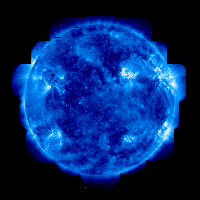

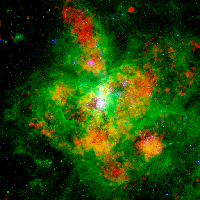
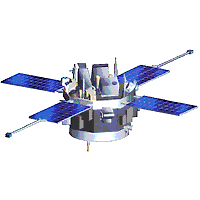
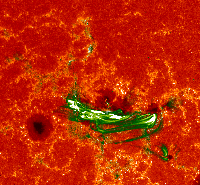
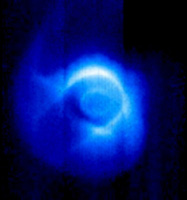
Click on images above to
learn more about them
A service of the Heliophysics
Science Division at NASA's GSFC
Questions and comments to: cosmicopia@cosmicra.gsfc.nasa.gov
Curator: Dr Eric R. Christian, NASA
Responsible NASA Official: Dr Eric R. Christian
Privacy Policy and Important Notices
Questions and comments to: cosmicopia@cosmicra.gsfc.nasa.gov
Curator: Dr Eric R. Christian, NASA
Responsible NASA Official: Dr Eric R. Christian
Privacy Policy and Important Notices

HOME
In the News
History
Ask Us
Great Links
Glossary
Site Map
Search NASA